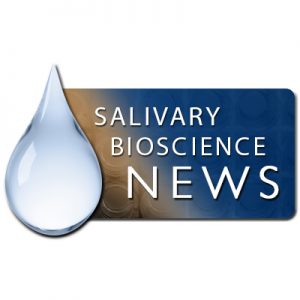Salimetrics Assays & daacro Support Findings from the FemNAT-CD European multicenter study
January 11, 2018Salimetrics Assays & daacro Support Findings from the FemNAT-CD European multicenter study After four years of intense research and collaboration, the EU-funded FemNAT-CD project will present its results to the broader public. The multicenter study has explored the mechanisms of conduct disorders (CD) in girls with CD from childhood to young adulthood and is aiming […]
HPA axis and SNS reactivity moderate relationship between IPV and infant internalizing behavior
January 10, 2018Exposure to intimate partner violence in utero and infant internalizing behaviors: Moderation by salivary cortisol-alpha amylase asymmetry. Author: Martinez-Torteya C, et al. (2017), Early Human Development Guided by the main tenets of contemporary models of the developmental origins of health and disease, this study evaluated whether individual differences in reactivity of the hypothalamic-pituitary-adrenal (HPA) axis […]
Lower BMI and uric acid in Mexican-origin families with greater fear of deportation
Household fear of deportation in Mexican-origin families: Relation to body mass index percentiles and salivary uric acid Author: Martinez AD, et al. (2017), American Journal of Human Biology OBJECTIVE: Fear of deportation (FOD) is a prevalent concern among mixed-status families. Yet, our understanding of how FOD shapes human health and development is in its infancy. […]
Reproducibility of salivary cortisol measurement across established-qualified laboratories
Measurement of cortisol in saliva: a comparison of measurement error within and between international academic‑research laboratories. Author: Calvi JL, et al. (2017), BMC Research Notes Early life adversity is associated with adult elevations of inflammatory markers such as circulating levels of C-reactive protein (CRP). Few studies have examined inflammation levels during infancy nor the associations […]
Variations in DHEA-S associated with health and maturation during adrenal development
Adrenal maturation, nutritional status, and mucosal immunity in Bolivian youth. Author: Hodges-Simeon CR, et al. (2017), American Journal of Human Biology OBJECTIVES: Humans-and several other apes-exhibit a unique pattern of post-natal adrenal maturation; however, the causes and consequences of variation in adrenal development are not well understood. In this study, we examine developmental and age-related […]
Traumatic childhood injuries related to changes in stress reactivity
Altered Stress System Reactivity After Pediatric Injury: Relation with Post-Traumatic Stress Symptoms Author: Ewing-Cobbs, et al. (2017), Psychoneuroendocrinology Research Article Highlights; HPA and ANS stress systems were dysregulated after nonintentional pediatric injury. HPA and ANS activity and regulation varied with age at injury and type of injury. Cortisol reactivity to social stress was attenuated after […]
The role of testosterone and age in impatient decision-making in boys
Dissociable effects of age and testosterone on adolescent impatience Author: Laube C, et al. (2017), Psychoneuroendocrinology The onset of adolescence is associated with an increase in transgressive behaviours-from juvenile delinquency to substance use and unprotected sex-that are often attributed to increased impulsiveness. In the past, this increase was ascribed to “raging hormones”; more recently, to […]
Disorganized attachment in infants associated with elevated salivary CRP
August 2, 2017Increased levels of inflammation among infants with disorganized histories of attachment Author: Measelle JR, et al. (2017), Behavioural Brain Research Early life adversity is associated with adult elevations of inflammatory markers such as circulating levels of C-reactive protein (CRP). Few studies have examined inflammation levels during infancy nor the associations between sources of adversity and […]
Non-invasive oral fluid immunoassay for hepatitis E virus (HEV) infection
July 27, 2017Development of an oral fluid immunoassay to assess past and recent hepatitis E virus (HEV) infection Author: Pisanic N, et al. (2017), Journal of Immunological Methods BACKGROUND: Hepatitis E virus (HEV) infection causes significant morbidity and mortality worldwide, particularly among pregnant women. In clinical settings blood-based testing protocols are commonly used to diagnose HEV infection, […]
Childhood maltreatment affects cortisol and alpha-amylase stress reactivity
July 19, 2017Patterns of cortisol and alpha-amylase reactivity to psychosocial stress in maltreated women Author: Mielock AS, et al. (2017), Journal of Affective Disorders BACKGROUND: Childhood maltreatment can trigger enduring changes in major stress response systems, particularly in the context of major depressive disorder (MDD). However, the relative impact of maltreatment versus MDD on hypothalamic-pituitary-adrenal axis and […]
 Contact: Salimetrics (USA)
Contact: Salimetrics (USA)
